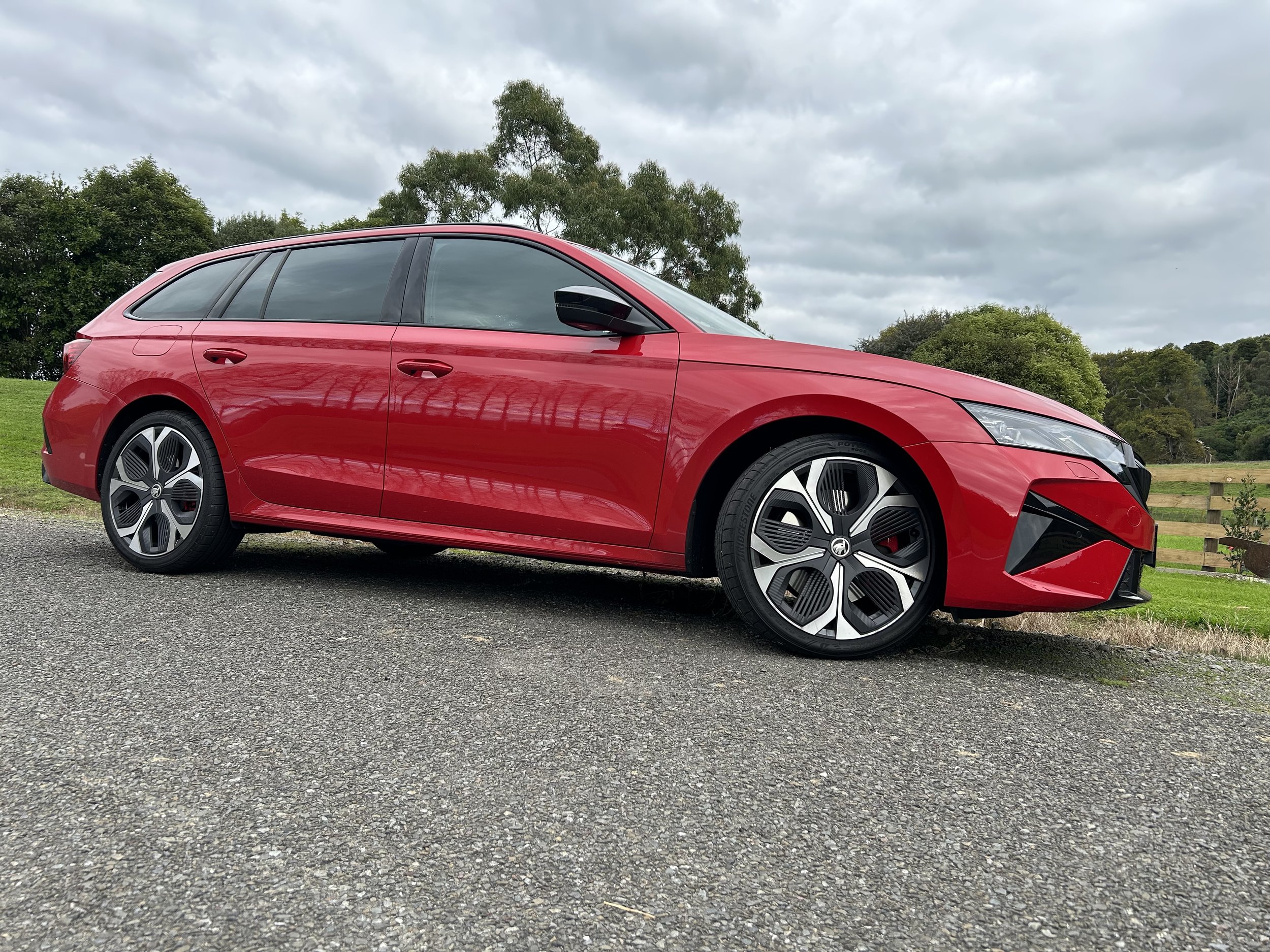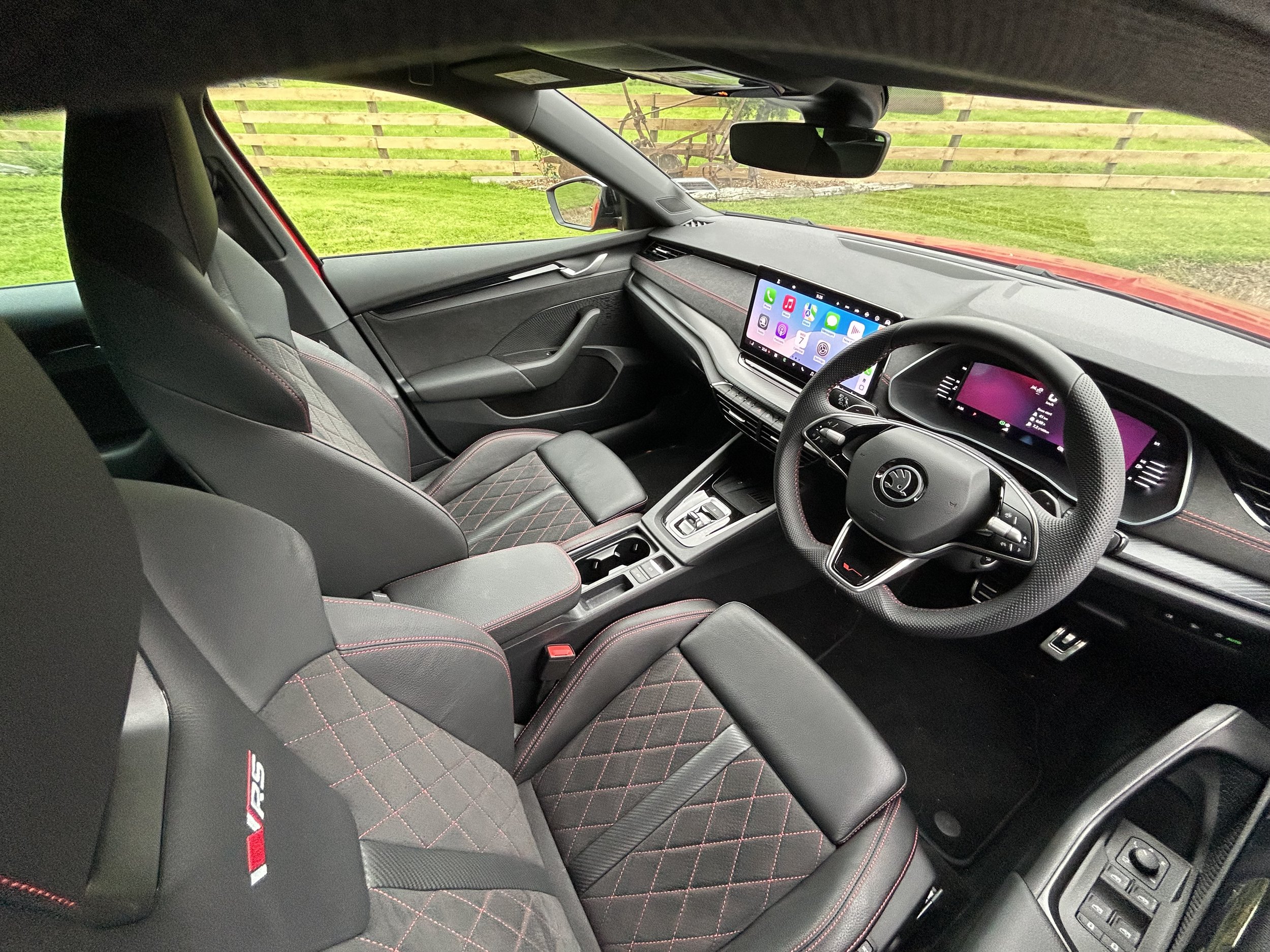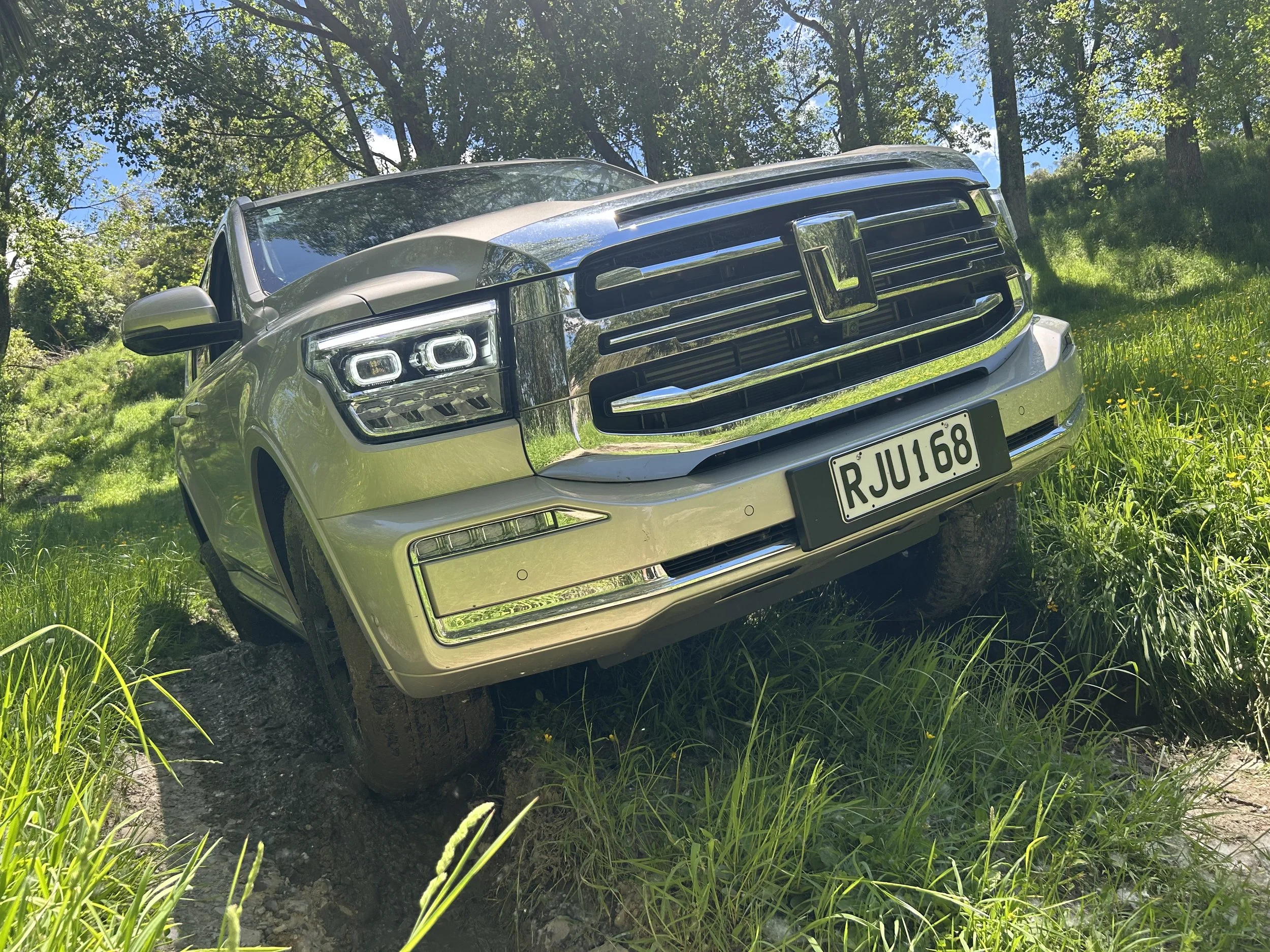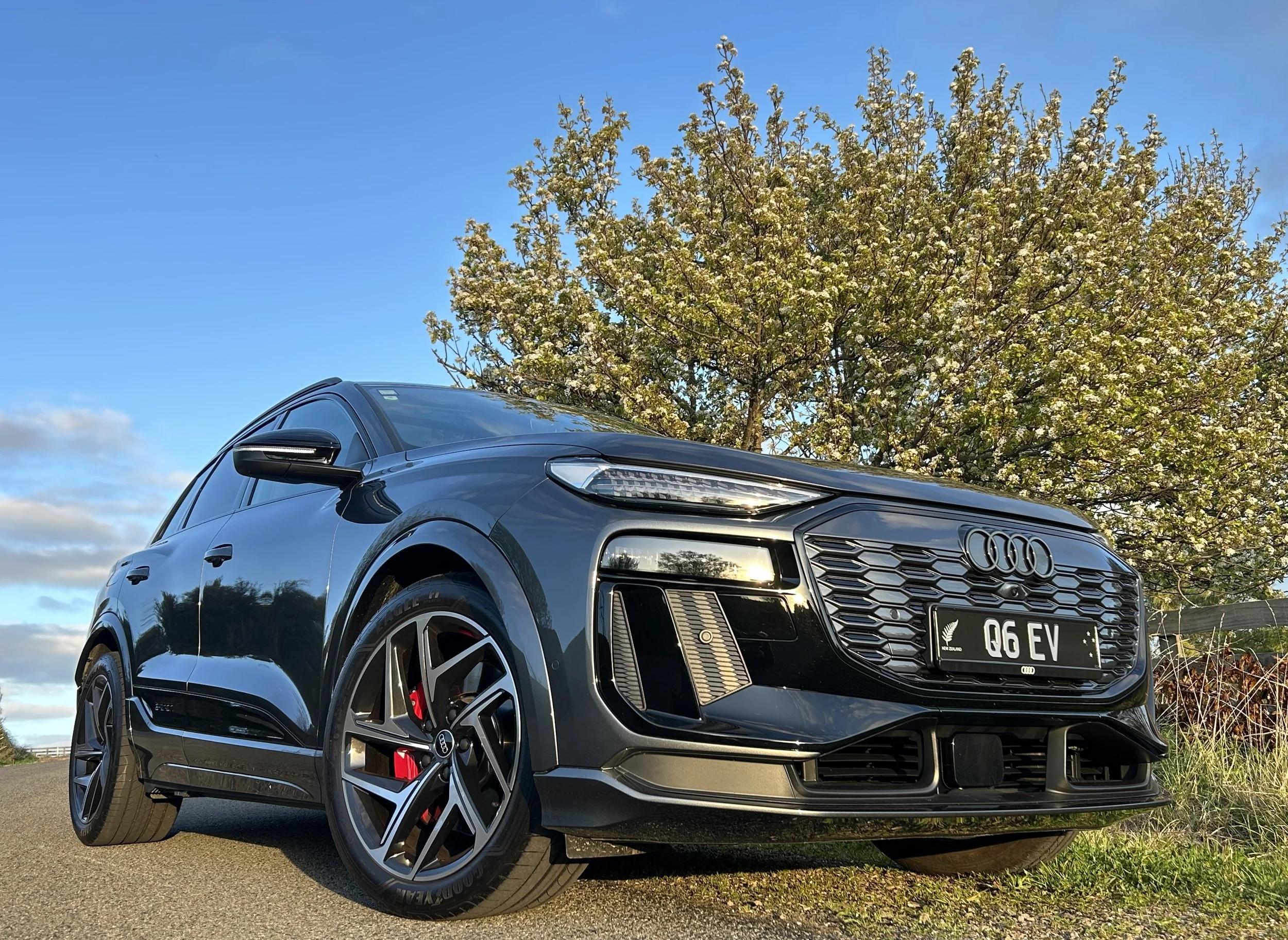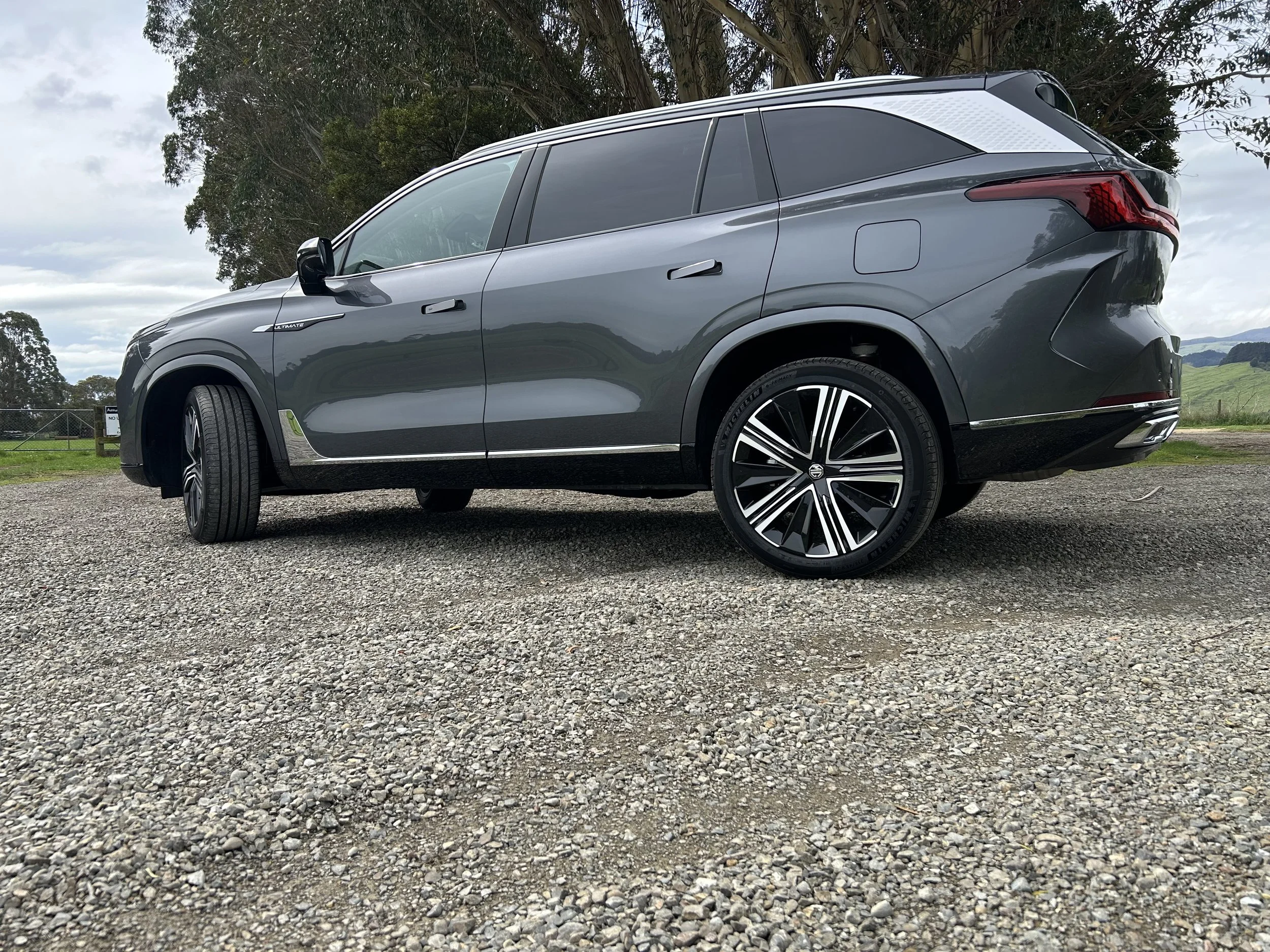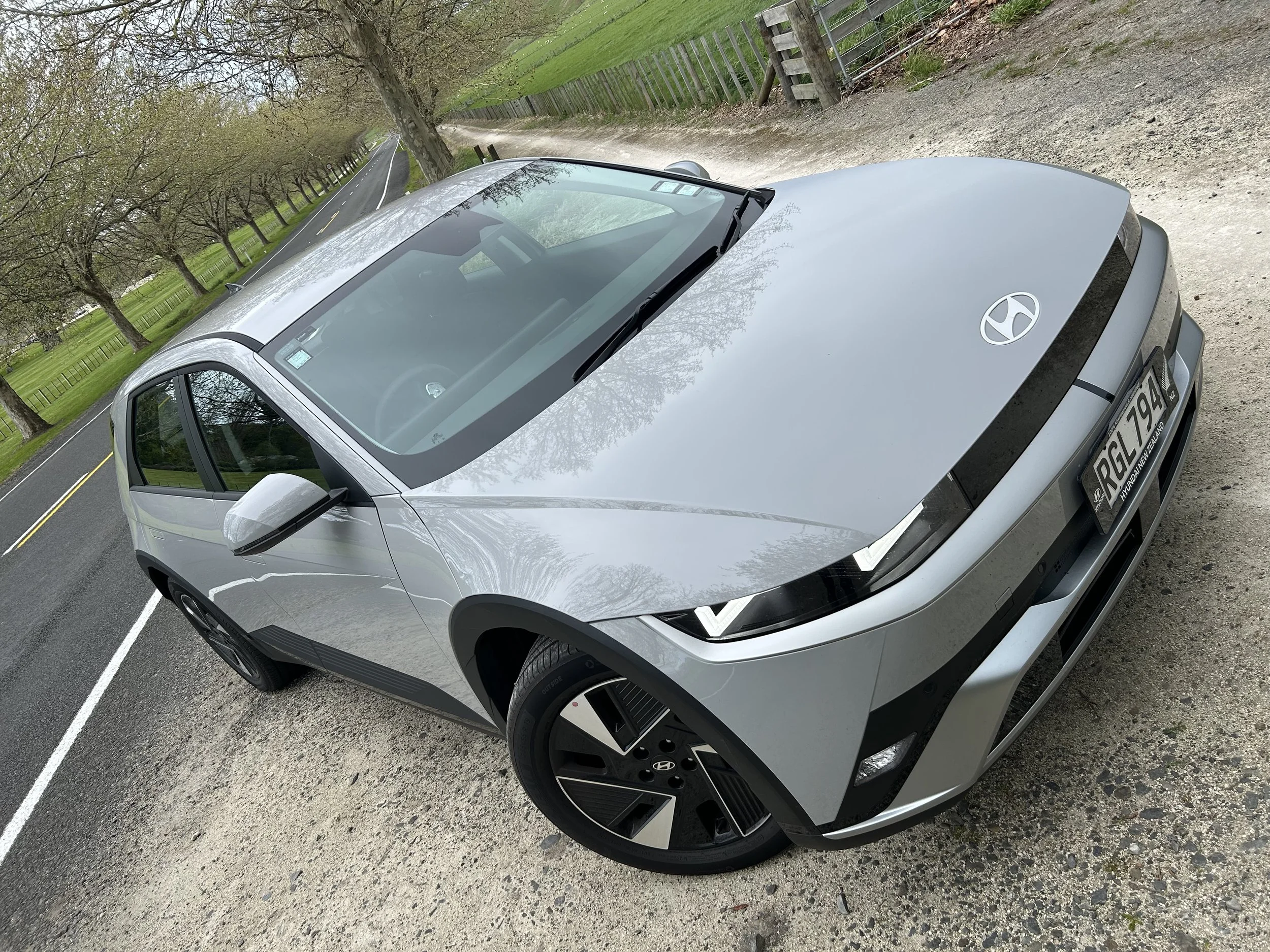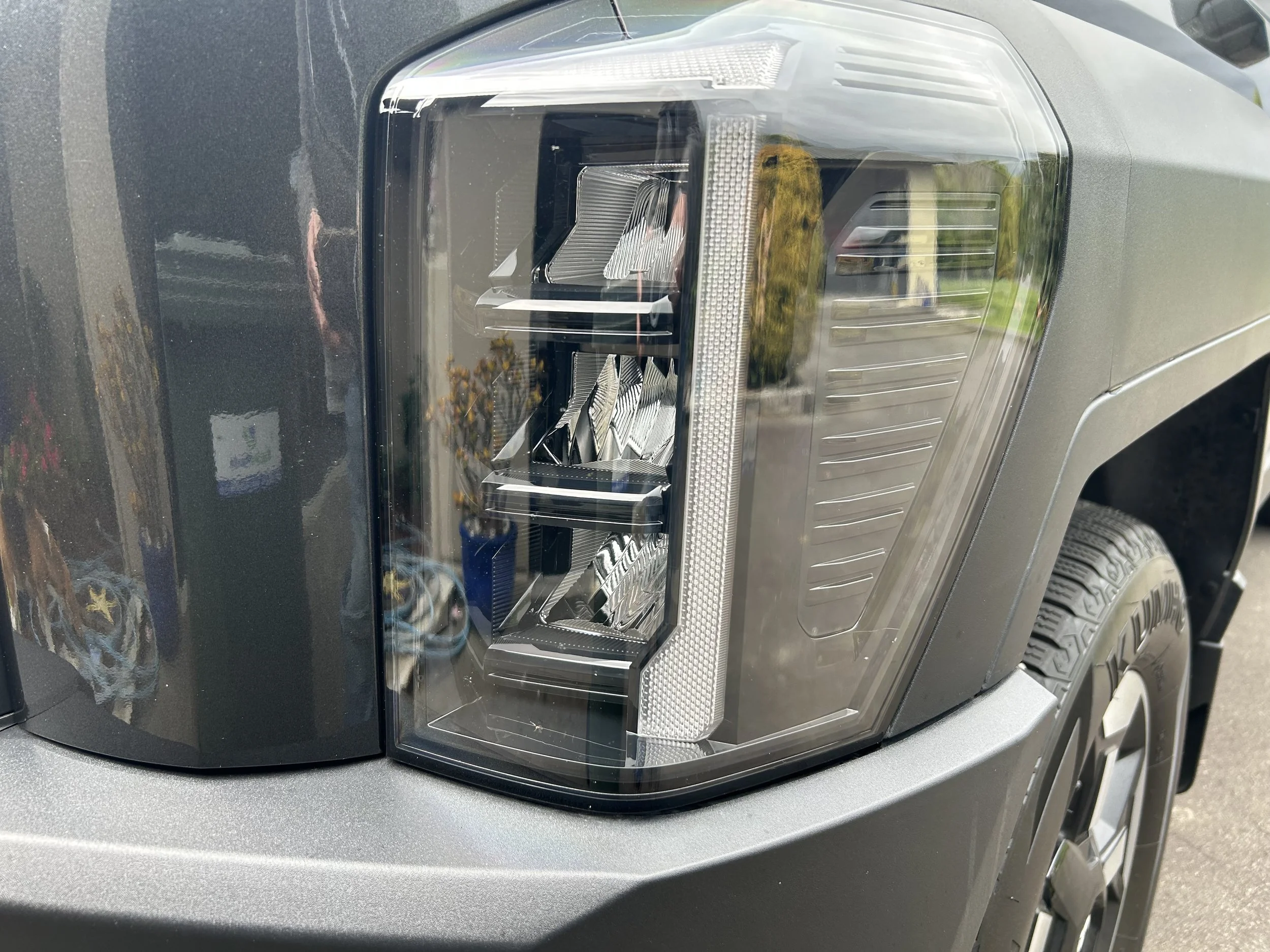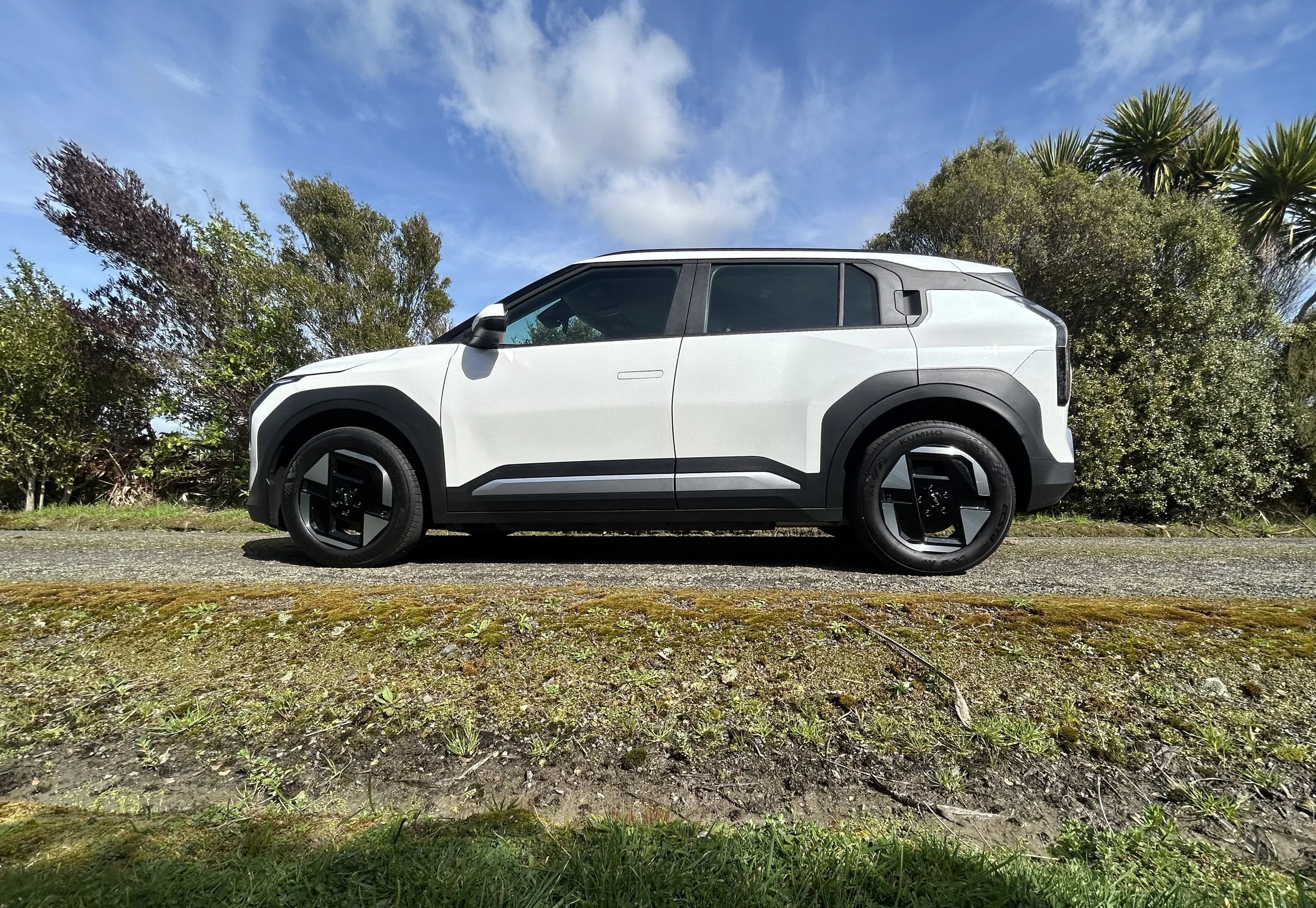Skoda Octavia vRS road test review: Czech mate too cosy with VW alternate?
/The latest generation of this sports-themed station wagon is a polished performer. But will being so closely priced to a gear-sharing hot hatch erode sensible values?
Price: $78,000.
Powertrain: 1984cc turbocharged petrol four cylinder, 195kW/370Nm, seven speed direct shift gearbox.
How big: 4709mm long; 2003mm wide; 1468mm tall.
We like: Improved drivetrain; nicely-calibrated driver assistance and safety tech; neat blend of practical and performance will win over pragmatic buyers.
Not so much: Priced uncomfortably close to Golf GTi; no chance of all-wheel-drive with this engine; absents Kodiaq/Superb ergonomic elements.
AS is increasingly the case within the automotive world, the Skoda Octavia as it presents here is very likely a ‘last chance to see.’
This isn’t a prophecy of doom for the nameplate. Assuredly that will live on, being something too valuable to lose. It’s the car itself that’s up for change.
As we all know, the world is changing and car makers are adapting to a new era. Octavia is next in line for transformation into a you-know-what.
Now Europe’s fourth-largest car maker, rising three places from 2023, Skoda has determined a ‘Next Level Efficiency-plus’ programme that’s designed to keep all powertrain options open to customers while still reducing CO2 emissions.
This means it will, for the foreseeable future, offer parallel ranges of electric cars and combustion-engined models while striving for price parity – even if that means a dent in profit margins.
Nonetheless, there’s no dilution of the EV development programme or any shared second thoughts about when cars switch off allegiance to fossil fuels.
Electric is already part of Skoda’s brand push. The Enyaq that began this era here is about to be updated locally, a sister SUV but on a slightly smaller scale called Elroq is joining it soon locally. More are coming.
How much longer will Skoda’s EVs exist in a parallel line-up as the brand prioritises consumer choice?
Those keeping up with international motoring news might well already know Skoda will preview the Octavia’s electric future with a new concept car at a big motor show in Germany September.
Octavia presently sells best as a station wagon, so that’s the styling the concept will take to the Munich show.
Will it replicate in the RS presentation (more correctly, ‘vRS’ but the first letter seems to be silent here) tested here? Quite logically, it might well do. That’s the fan favourite.
What’s known is that it will showcase a next-generation architecture to be rolled out across the Volkswagen Group’s future electric models and also a new design language for Octavia.
So how long before the car shown here slips away? Rest easy if you prefer the current, petrol-themed choice. Indications are that point of retirement from the pump and plugging into the grid is a 2030 assignation.
Before the electric Octavia, two more Skoda EVs are due: The Epiq, a sibling to the Volkswagen ID 2 and Cupra Raval, will show in 2026 as an entry-level electric car. Also cited for next year is an electric equivalent of the Kodiaq, also in seven seater delivery. That’ll be a productionised rendition of its Vision 7S concept car.
Those are headline makers, but so too the battery-wed Octavia. That Octavia sells less strongly here than Kodiaq or Superb wagon (because of the Police contract) is Kiwi thing.
In other markets, and most notably in Europe, Octavia is No.1. Thus the electric type’s development is a high property project. the future model is expected to lead the next generation of electric Skodas and also mark the point where its combustion-engine and all-electric ranges start to converge. A lot is riding on it.
The vRS in today’s world assuredly feels less pressure. What we’re seeing just now is a hefty refresh of a long-admired package. It achieves updated exterior looks, a better interior interface within courtesy of a larger infotainment system and the famous EA888 2.0-litre four-cylinder petrol has been given a power boost to maintain equality with the Volkswagen this Skoda is always compared to, the Golf GTi.
The thematic of the Octavia RS being the thinking family man’s version of the classic thinking man’s hot hatch is wholly entrenched. Same powertrain, transmission and MQB platform. Even the same 235/35 R19 Bridgestone Potenza tyres. The wagon being a little longer, heavier makes it a little slower to 100kmh from a standing start - a factory claimed 6.5 seconds puts it 0.6s behind the world-famous hot hatch - but in the Plus format tested, the RS is just as fast overall.
Historically, the Octavia has also appealed for being the smarter ideal: A boot that’s 50 percent bigger, a more spacious interior overall. Yup, those factors still play.
Also, the Q-ship appeal. Golf GTi has a certain snappy style, but if you prefer your performance to lay out a bit less loudly, then the Octavia RS even with all its embellishments sights a more softly-softly.
On top of all that, there’s been the price advantage play. And, about that ….
Gone are the days when this Octavia was a sub $60k buy. The sticker that in 2021 bought the sportiest edition now comes $2000 short of the amount sought for a base 110kW 1.4-litre car; basically, there’s been a 30 percent price increase on some products during that period.
To achieve the Octavia RS you need to spend $71,500, but that’s for a less generous spec than tested. Dressing the car with Plus extras of suede, leather, and electric adjustment to the front seats, plus a Canton sound system, makes for a smarter experience, but also adds another $6500.
With the Golf GTi now costing $72,490, the historically healthy price gap between it and the Skoda is narrower in this generation than any previously, but when the VW fits out with its $6000 Touring pack that is similar to Skoda’s, it’s almost non-existent: A mere $490.
Do you pick up the car which works better for general driving and taking the dog to the park, but is more low-key and potentially less celebrated by performance car cognoscenti? Or do you go for the one with wholly-established icon staus, a better soundtrack and, in having 100kg less to heft and a shorter wheelbase, is going to be even better fun on track days or even just Sunday flings? Yeah, that’s when it becomes a tough one …
But let’s suppose a hatch simply won’t do. In which case, the decision is super-easy … by all means settle here.
Station wagons are a rare breed now, performance types even less so. The newest from Europe just now are this … and the the BMW M3 Touring, at triple the price.
The Octavia’s feel-good is palpable and heartening. Skoda’s history of playing around with powerplants for this variant has been interesting; it’s had a diesel and iV plug-in petrol hybrid as alternates to the EA888.
That both have been dropped and just this long-serving 2.0-litre turbocharged TSI remains in 2025 suggests it now believes that, as much as the future is electric, for now the engine that will optimally suck in 7.2 litres per 100km of high octane now according the factory, rising to 8.8L/100km on this week long test, is probably the best one to appease fans.
It certainly didn’t disappoint me. Like the change from Golf GTI Mk8 to Mk8.5, the engine has gained 15kW of peak power for a headline output of 195kW - making it the most potent Skoda RS yet.
Maximum torque remains the same as in the pre-facelift version at 370Nm, but that’s no impediment to how it operates, save that anyone who brags will sooner or later be reminded that the iV, for all its limitations, still stands as the most muscled, with 400Nm.
It’s the Skoda’s bigger frame that makes it slower than the Golf; but if you stow the stopwatch and simply judge the wagon on its visceral feel and rortiness, then it’d be easy to imagine it and the Golf would be equals in any sprint. It simply never feels any more or less inhibited by kilo count, in the grand scheme of things, than before. The additional oomph sparks up initial acceleration, but is potentially more of an assist in the mid-range, given it feels well-muscled when asked to step up smartly during cruise; overtaking just isn’t an issue. Overall, you ‘d be hard-pressed to think it lacks for pace.
Given how it formats, it’s possible this car will be subjected to less strenuous workouts than a GTi, but you shouldn’t imagine it’s not up to being pushed toward the edge.
With its advanced electronically controlled front differential, the 15mm-lower sports-tuned suspension and some glorious steering, the Octavia RS is very engaging. Dial up Sport mode and it rips through its seven forward gears. Not very eco-friendly, nor hardly socially responsible, but enjoyable all the same.
It’s a pity the engine isn’t a bit more vocal; when gunned it can come across as a bit gruff, but it never seems to bark. If this was a Golf, you’d be looking to optioned up to a Akrapovic sports exhaust to achieve an appropriately growling, snorting soundtrack, but apparently Skoda doesn’t shop there.
Were the Octavia related to the Golf R, it’s be all-wheel-drive; but that’s set-up has only occurred with the diesel. Skoda says the petrol front-drive is a historical lineage. The car is not lacking for grip, but you need to watch your throttle inputs, not least when kicking out of an intersection, else it might break traction.
However, when accelerating hard out of bends, you can occasionally feel it fight the wheel. A bumpy uphill section on a favourite road got the front axle tramping momentarily. It’s not unruly, but you need to understand why deactivating the traction control isn’t always prudent.
Even then, as much as it swings easily and briskly into an apex, on the way out you need to understand when it will grip and when it might bite.
Octavia has a wheelbase knocking on 2.7 metres, which makes it about 50-60mm longer between the axles than its Volkswagen and Audi contemporaries, and that is probably a positive for ride and comfort, but arguable detrimental to assertive handling and sharp dynamics even though, compared with lesser Octavia variants, the RS features a more sophisticated suspension setup of MacPherson strut front end with lower triangular wishbones, and a four-link independent rear.
That’s a sharp set-up, but the single best element of the dynamic repertoire has got to be the adjustable suspension dampers. How they’re used is the trick.
Pre-set settings on the Dynamic Chassis Control (DCC) for Comfort, Normal and Sport modes seem logical enough but before falling into temptation and simply firming up the car to extremis for press-on driving with the last, consider what the Individual mode might offer.
With this, you can fine-tune up the throttle and steering but also achieve more suspension compliance; which can be handy for ambitious driving on rugged secondary roads. While the car will lean a little more, but the trade-off is that it feels surprisingly supple and forgiving, while still maintaining a keen and accurate line of attack.
The other alternate is to leave the car in its standard tune, which actually also works perfectly fine for the most past. The default delivers a taut-edged but beautifully controlled gait and, if anything, seems to better isolate its occupants from tyre noise.
The car’s fighting spirit is possibly greater than the styling side might signal. Sure, the badges aren’t the only signifier of this being the family hoon, but overall it’s not exactly a fire breather in its look, not even with the vibrant Velvet Red of the test example.
Apart from being lower, over and above the standard model it signals phwoar footing by having black exterior detailing, chunkier bumpers and a set of large alloy wheels and fat rubber. It’s a shame the alloys are besmirched as they are on the Superb; with plastic inserts that are there to deliver improved aerodynamic efficiency. The trouble is, they look tacky. Without them, the wheel styling is much nicer. But you will have to buy new wheel centres, as the existing ones don’t transfer.
A general update for Octavia is the provision of LED light clusters front and rear. On the RS, the daylight running lights are downward angled to echo the shape of the radiator grille; a small but effective design improvement.
Major RS-related touches overlaying the cabin are those wonderfully form-fitting, seemingly fits-all-sizes sculpted front bucket seats, a gorgeous three-spoke sports steering wheel, some new trim finishers in the dash which kinda mimic carbon fibre and the obligatory contrast red stitching.
Specification ticks off heating for all outboard seats, the windscreen and the perforated sports steering wheel with paddle shifters. It has a head-up display, wireless Apple CarPlay and Android Auto, satellite navigation, digital radio, tri-zone climate control, a 15-watt wireless charger, walk-up unlocking and walkaway locking, a 360-degree parking camera and clever cargo netting. Four USB-C outlets, dual-zone rear air vents and clever touches like rear phone holders are found in the back.
The car’s interior in general has also been updated, but not the same way as has occurred for the Kodiaq and Superb. Material quality is strong, the dashboard is elegant and easy on the eye, but the overall delivery is more closely aligned to VW cars than the family mates and so less forward-thinking.
Whereas Kodiaq and Superb have gone to a twist style wand behind the steering wheel for gear selection, the Octavia keeps on with a mid-console glorified switch. It’s just as VW does with the Golf but this, and absence of the excellent Smart Dials that you’d get in the larger Skodas, makes the Octavia feel more dated.
The graphics on the 10.25-inch digital instrument cluster have been sharpened up but the big change is adoption of a 13-inch infotainment touchscreen, which is also beautifully rendered.
The main screen is easy to navigate and most of the menus branching off it also seem logical, which is just as well, because you’ll be interacting with it frequently. And that’s even though we haven’t the full strength capability offered in Europe, where it provisions online connectivity features not enabled here.
Skoda keeping on some key shortcut physical buttons just above the central air vents is praiseworthy, as with the like-configured VW models, there’s still too much of an over-reliance on the central touchscreen for various in-vehicle functions.
Having gone to the Octavia after having had quality time with the Kodiaq and Superb, I really missed the larger cars’ clever dials. Here having all its climate functions on the touchscreen seemed a less useful pathway. As much as the speed of its responses and its graphical clarity seem more than good enough, there will be moments of infuriation.
On the infotainment side, if you find the proprietary software isn’t to taste, you can obviously bypass with either Apple CarPlay or Android Auto, which now hooks up wirelessly if that’s your preference to running a cable.
Skoda provisions a Qi smartphone charging pad capable of running at 15 watts, also with a cooling feature to prevent your device from overheating while its battery is replenished.
Skoda’s largest wagon is tangibly larger for interior space than Octavia - it’s not just a matter of length but also width - but so it should be; one’s medium, within what the industry calls the C-segment, whereas it’s sibling is emphatically within the large class, to point of breaking beyond the upper boundaries.
Within it’s own category, Octavia does well. Rear passenger room is almost lounge-worthy and while it wouldn’t swallow my dog carrying cage as easily as the Superb did, the Octavia with 640 litres’ capacity with the rear seats in place, rising to 1700 with them dropped, still has a very decently-sized boot among its competitor set.
The main role of the Octavia is to be a decent, reliable and value-strong family car. The RS obviously stretches that ethos into the top of its price band, and then some. It was easier to extoll the car’s value in 2021 than it is four years on.
With comfortably more than seven million examples sold since it appeared in its modern incarnation, Octavia is clearly striking a winning chord for Skoda.
So no wonder the update of this fourth-generation version doesn’t bring any dramatic changes, all in all.
That’ll be the next one and I’ve got to say I’m already highly intrigued.




